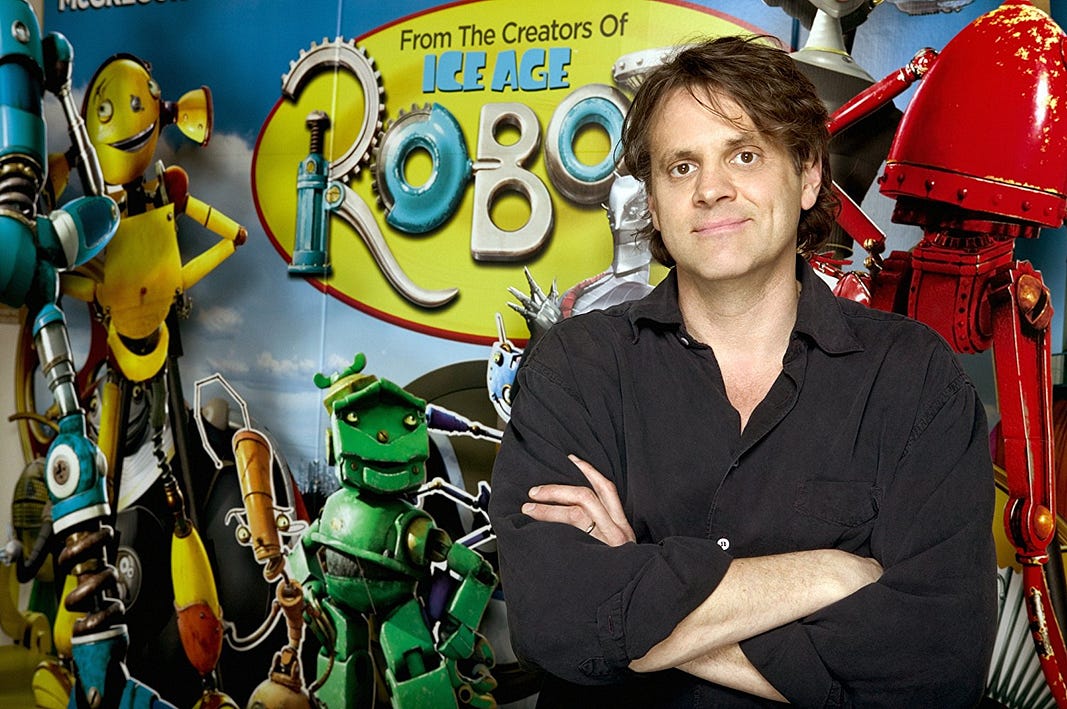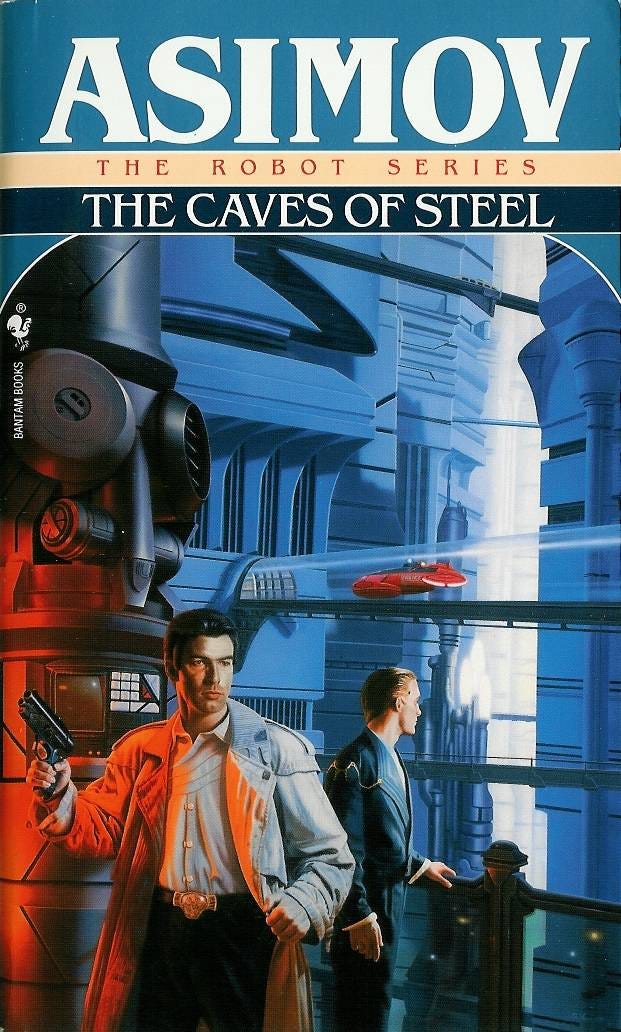An Open Letter to Blue Sky's Chris Wedge
" “>
 Hey look! It’s you!! Chris Wedge!!! Nice pic. Great movie.
Hey look! It’s you!! Chris Wedge!!! Nice pic. Great movie.
Dear Chris,
I heard the news. I’m sorry I didn’t write sooner. Things have been a tad crazy of late, what with the pandemic and gun violence and political division and illegal wars and whatnot. I started writing this before the war and Uvalde, but I felt it was important to acknowledge these facts of life and death we are facing before I launch into this escapist fever dream. Anyway…
Disney can be quite the pain in the ass these days, what with all the acquisitions and late-stage Capitalism and all. I recently read the Paste piece, An Oral History of Scrat Tales: The Death and Legacy of Blue Sky Studios, and I feel for you and your peeps. For the record, I don’t think it was a mistake to be hopeful that Disney would act to protect contemporaries of the modern animation industry. You know, because Disney is one of the most prolific animation studios ever.
Such presence gives you the impression that they might commiserate. In retrospect, they did end up protecting a legacy, namely their own … by engaging in predatory catch-and-kill just to shut you down and absorb your valuable intellectual property and talent. But hey! Live and learn, right? We just have to process and integrate the setbacks and and keep pushing forward while keeping a sharp eye on our past, as it informs us of potential futures and how to avoid them. (If that’s what “we” want, that is.)
And there’s nothing Disney can do to erase Blue Sky’s legacy as one of the few smaller studios that could offer the big players a challenge at the box office, to be sure alongside Chris Meledandri’s Illumination. Thirty-five years, thirteen theatrical films, more than $5 billion in revenues, and two Oscar nominations, Blue Sky was no joke. Dude! You yourself won a freaking Oscar for Bunny back in 1998 only to release Ice Age two years later. And I don’t care what anyone says, but 2005’s Robots is a just a masterpiece. One of the truly underrated greats, in the same vein as The Road to El Dorado, The Iron Giant (Vin Diesel’s best role by far), or Disney’s own The Emperor’s New Groove, to name a few.
You, sir, are a force in the world of animation.
But, here we are. It’s 2022 and it has become clear that being a force for anything offers no friction to Disney’s ambitions. If they want to take on or end something, they can simply buy it. It’s like Disney went to the park with its ball, had a great time with everyone else while doing their damnedest to ignore you, and when he took his ball to go home, took your tricycle for good measure. And it’s not like the pandemic has been ‘helpful.’ I wouldn’t be shocked in the slightest to learn that aspects of Disney’s decision to close Blue Sky was to let them shunt more cash into their cash strapped amusement park division and fretting over content for their then upcoming Disney+ streaming service.
Looks like someone needs a new tricycle…
So, this is a pitch… of sorts. But it’s not a pitch for me. I’m simply offering the concept. I have no skills aside from stringing some vaguely comprehensible words together in sequence, but I do have an imagination. No, it’s a pitch for you.
Animate books.
Now, I’m not talking about the atrocious adaptations (not ADAPTIONS, people! A-dap-TAY-shuns, for cryin’ out loud) that plague our cinematic past, or even the really good ones, for that matter. Regardless of the quality, or lack thereof, these adaptations necessarily strip out loads of context, interactions and impressions, additional plot lines, and almost everything else to focus on the core story because, you know… two hours.
So, as insane as it sounds, what if you don’t do that. Instead, adapt the book as closely to the written work as possible. Take the dialog wholesale. Design the scenes to appear as described in the pages. In other words, use the book as the script, stage direction and all. Make each page fly out of the book and into a tangible world where the rules make sense because you know the story in static form.
A few more suggestions:
- Don’t change anything unless you have to for technical reasons. If the book is worthy to adapt, why would you change anything that wasn’t already constrained by the animation process, and we both know that animation offers no constraints. Period. We can do anything in animation.
- Don’t modify the plot, motivation or conflict so “modern” audiences can “relate” to it better. Again, if we love the tale, what benefit comes from modifying a major part of what made it resonate?
- Any character description should be taken as canon, everything else is fair game. If the author doesn’t mention any particular aspect or aspects of a character, you can flesh them out how you like, but if something is clearly stated, it needs to be there. Taking a text description into a fully-realized visual world means a lot will need to be filled in. The book, after all, is for the theater of the mind, so some expanded development is almost assuredly required for most any book.
- Don’t feel stuck making a film. In fact, DON’T make a film. Make a series, and make it as long as it needs to be to fit everything from the book in. Some books will lend themselves well to adapting a chapter to an episode rather neatly, while others might need more creative solutions. Trust the viewers to watch as little or as much as they prefer, much like reading a book!
- Hire the best voice actors for the cast, not just the “best” celebrity stand-ins. Name one time someone told you that the only reason they went to see a film was because actor X, Y, or Z was in the cast and no other reason. The draw is the tale itself, not whatever A-lister is attached to it. Sure, it’s a force multiplier, but this shouldn’t be about massive, unlimited profits, but the artfulness of the work and how it reflects on our human existence or shows us parts of ourselves that might help us better understand us as living, thinking creatures drifting through space and time just hoping the ride is mostly nice along the way. I don’t doubt, however, that money will be made.
If I, as a complete nobody that brings nothing to the fore, were to opine on a first step, I’d say take it slow. I’d shoot for a few test scenes from a book of your choice. If I were to choose, I’d start with Isaac Asimov, preferably Caves of Steel, the first in his Robot series.

The description of Isaac Asimov’s “The Caves of Steel” taken from GoodReads.com — “A millennium into the future two advancements have altered the course of human history: the colonization of the galaxy and the creation of the positronic brain. Isaac Asimov’s Robot novels chronicle the unlikely partnership between a New York City detective and a humanoid robot who must learn to work together. Like most people left behind on an over-populated Earth, New York City police detective Elijah Baley had little love for either the arrogant Spacers or their robotic companions. But when a prominent Spacer is murdered under mysterious circumstances, Baley is ordered to the Outer Worlds to help track down the killer. The relationship between [Lije] and his Spacer superiors, who distrusted all Earthmen, was strained from the start. Then he learned that they had assigned him a partner: R. Daneel Olivaw. Worst of all was that the “R” stood for robot — and his positronic partner was made in the image and likeness of the murder victim!” The novel is one of Asimov’s many “proofs” that science fiction can be applied to any genre, not just its own, not that Asimov needed to prove anything to anyone :)Simply put, and apologies for being a tad brutal here, but nobody has given the idea of a 1:1 adaptation through the artistry and flexibility of animation a go before, and it’s not like you’ve got much else going on… I mean you’re exec’ing on some Puyo Puyo movie and some “Popeye” thing. That can hardly be taxing.
I kid… a little.
With the right property, the correct treatment, with solid massaging by a quality team that groks the rules, I think you’d have one killer app on your hands, and significant demand for more. But like I said before getting excited again, take it even slower.
Whip the first few chapters of Caves of Steel into storyboard form. Try blocking out some solutions for inner monologues and other “unfilmables”. Cobble out a few scenes, see how they work around the dialog. How much runtime can you get out of a chapter?
Of course, for a storied legend in your field, this would be a cake walk.
;P
Sincerely,
Tyler Knows Nothing